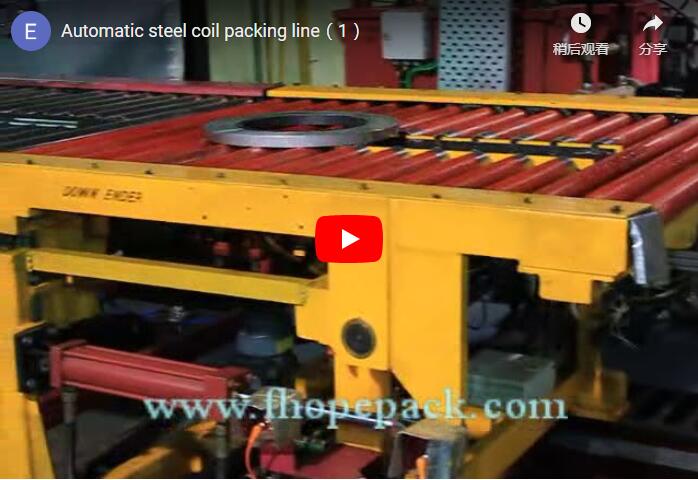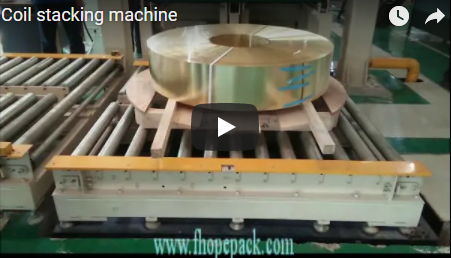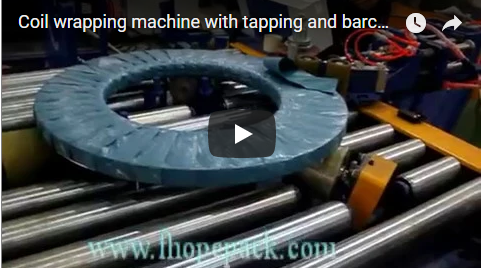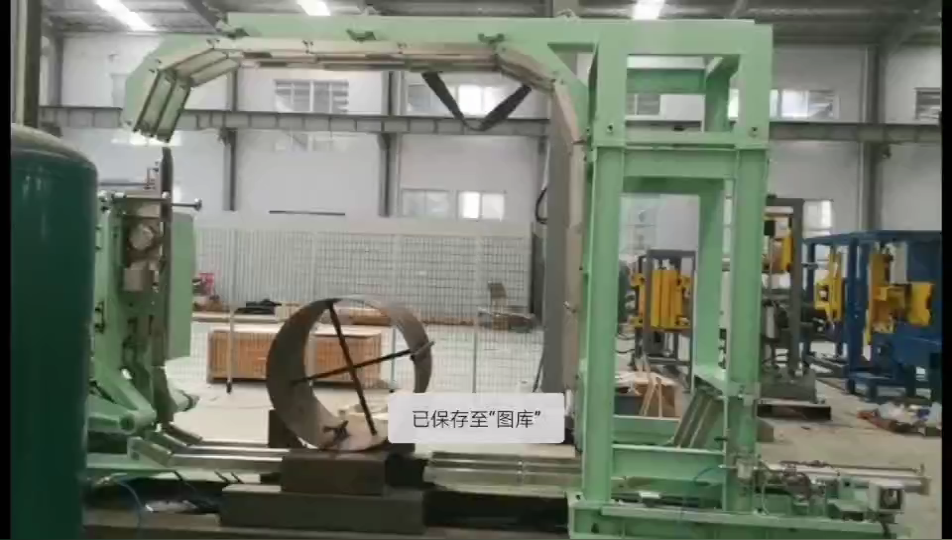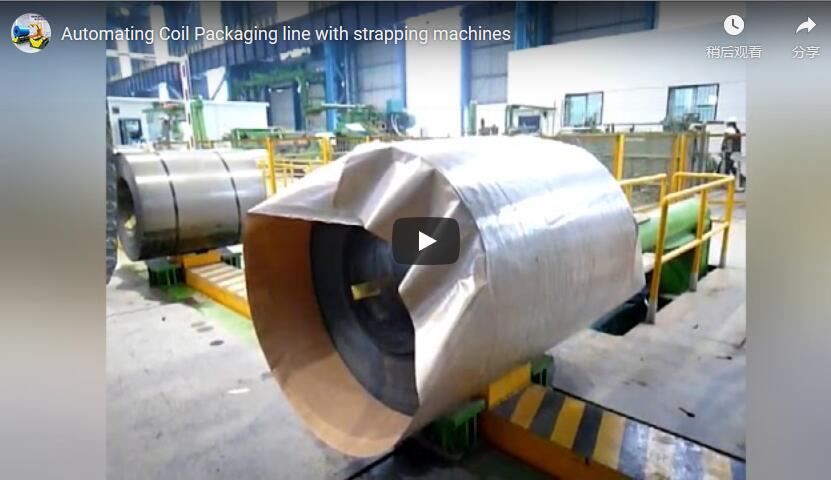In today's demanding industrial landscape, efficient and protective packaging for large bearings is not just a necessity—it's a critical factor in maintaining product integrity and operational efficiency. Manufacturers dealing with heavy, large-diameter bearings, such as those supplying the automotive, aerospace, or heavy machinery sectors, often face significant hurdles in their packaging operations. This article delves into the challenges of manual bearing packaging and presents a robust automated solution: the Big Coil Wrapping Machine, designed to streamline operations, enhance protection, and deliver significant ROI.
Explore various coil wrapping machine options tailored to diverse packaging and coil handling needs.
1. The Challenge: Inefficiencies and Costs in Manual Large Bearing Packaging
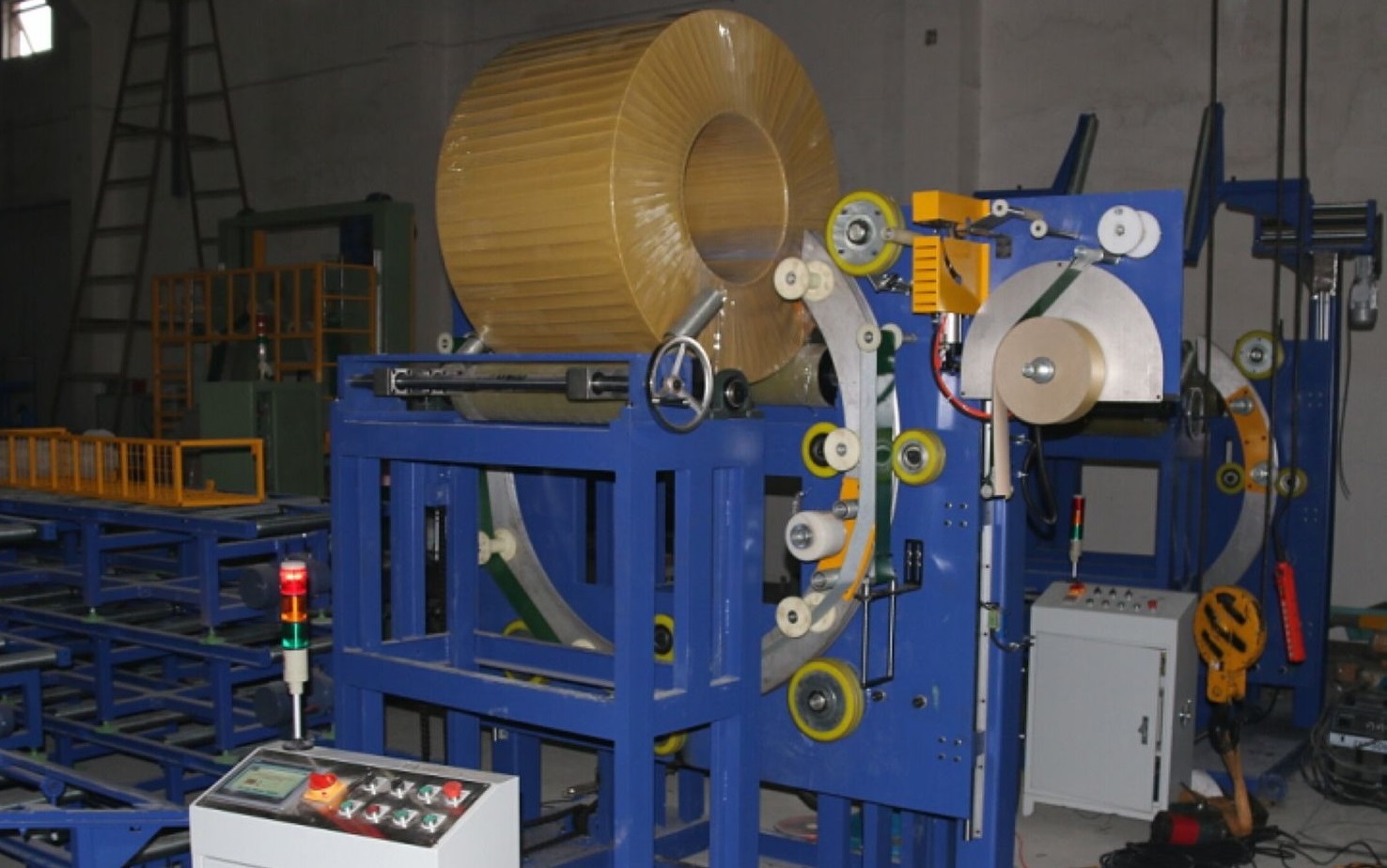
Traditional manual packaging methods for large bearings are fraught with challenges:
- High Labor Intensity: Wrapping large, heavy bearings often requires multiple personnel, increasing labor costs.
- Time Consumption: Manual processes are inherently slow, creating bottlenecks in production and delaying shipments.
- Safety Risks: Handling bearings weighing up to 2000kg manually or with basic crane assistance poses significant ergonomic and safety hazards.
- Inconsistent Quality: Achieving a uniform, tight wrap manually, especially multi-layer wraps (e.g., VCI paper + Stretch Film + HDPE), is difficult, potentially compromising bearing protection against corrosion and physical damage.
- Space Requirements: Manual wrapping stations often require considerable floor space for maneuvering large coils and materials.
- Skill Dependency: Effective manual wrapping often relies on experienced operators, making the process vulnerable to human error and skill shortages.
For facilities like large bearing warehouses or manufacturing plants, these inefficiencies translate directly into higher operational costs, reduced throughput, and increased risk of product damage or workplace accidents.
2. The Solution: The FHOPE Automatic Bearing Coil Wrapping Machine
Addressing these challenges head-on, the FHOPE Automatic Bearing Coil Wrapping Machine provides a specialized, automated solution for packaging large, ring-shaped products like bearings. This machine is engineered to handle the specific demands of heavy-duty bearing packaging, offering a significant upgrade over manual methods.
3. Core Design Principles and Structural Integrity
Built for demanding industrial environments, the machine's design emphasizes durability and reliability:
- Heavy-Duty Frame: Constructed from robust structural steel, the frame is designed to withstand the stresses of handling multi-ton bearings and continuous operation.
- Precision Ring Assembly: The core wrapping mechanism features a precisely machined ring and shuttle system, ensuring smooth rotation and consistent material application.
- Reinforced Support Rollers: Polyurethane-coated support rollers prevent damage to the bearing surface while providing stable support during the wrapping cycle. Anti-wear rollers ensure longevity.
- Safety Integration: Comprehensive safety features, including guarding, emergency stops, and potentially light curtains (depending on configuration), are integral to the design, complying with industrial safety standards.
4. Key Components Breakdown
The machine integrates high-quality components for optimal performance:
- PLC Control System: Typically utilizing PLCs from reputable brands (e.g., Siemens, Allen-Bradley), allowing for precise control over all machine functions and easy integration.
- HMI (Human-Machine Interface): An intuitive touch screen interface enables operators to easily set parameters (e.g., wrapping overlap, rotation speed, number of layers), monitor the process, and access diagnostics.
- Variable Speed Drives (VSDs): Control the speed of the ring rotation and conveyor/roller movement, allowing for optimization based on bearing size and material type. Soft start/stop functions protect both the machine and the product.
- Automatic Film/Paper Feed & Cut System: Pneumatically or electrically actuated clamps secure the leading edge of the wrapping material, and an automated cutter ensures a clean, consistent finish, minimizing manual intervention.
- Sensor Suite: Photoelectric and proximity sensors detect bearing presence, position, and diameter, enabling automated cycle initiation and control.
5. Technical Specifications Comparison: Manual vs. Automated Wrapping
| Feature | Manual Wrapping | FHOPE Automatic Wrapping Machine | Benefits of Automation |
|---|---|---|---|
| Bearing OD Range | Dependent on handling capability | 1000mm - 2000mm (Customizable) | Handles large range consistently |
| Bearing ID Range | Dependent on handling capability | 800mm - 1800mm (Customizable) | Consistent wrapping through the eye |
| Bearing Width | Variable consistency | 100mm - 300mm (Customizable) | Uniform coverage |
| Bearing Weight | High Risk, Crane Assist Needed | 200kg - 2000kg | Safer, automated handling support |
| Throughput | Low (e.g., 2-5 units/hour) | Higher (e.g., 10-20+ units/hour) | Increased productivity |
| Labor Requirement | 2-3 Operators + Crane Operator | 1 Operator (Supervisory) | Significant labor cost reduction |
| Wrapping Quality | Inconsistent tension & overlap | Consistent, programmable overlap & tension | Superior protection, less material waste |
| Material Handling | Manual feed, cut, secure | Automatic feed, clamp, cut | Reduced operator input, higher speed |
| Safety | Higher risk of strains, crush injury | Guarding, E-stops, automated handling | Enhanced worker safety |
| Power Supply | N/A | 480V, 3-Phase (or per spec) | Standard industrial power |
| Control System | N/A | PLC + HMI | Precise control, repeatability |
6. Operational Workflow and User Experience
The automated process significantly simplifies bearing packaging:
- Loading: The large bearing is loaded onto the machine's input conveyor or support rollers, typically via overhead crane or forklift.
- Parameter Selection: The operator selects the pre-programmed wrapping recipe or inputs specific parameters (bearing dimensions, desired overlap, layers) via the HMI.
- Automatic Cycle Start: The machine automatically positions the bearing. Sensors confirm readiness.
- Wrapping: The wrapping ring rotates through the bearing's eye, applying the packaging material (e.g., VCI paper, stretch film) with controlled tension and overlap. Support rollers rotate the bearing synchronously.
- Material Cut & Clamp: Upon cycle completion, the material is automatically clamped and cut cleanly.
- Unloading: The fully wrapped bearing is moved off the machine via the output conveyor or lifted by crane/forklift.
The intuitive HMI and automated sequences minimize the need for specialized operator skills, reducing training time and ensuring consistent results.
7. Customization Capabilities: Tailoring the Machine to Your Facility
Recognizing that no two facilities are identical, the machine offers customization:
- Pit Installation: The machine can be installed in a pit, aligning the working table/conveyor level with the factory floor for seamless integration with existing material flow and eliminating the need for ramps.
- Handling Systems: Integration with various loading/unloading systems, including powered conveyors, tilting devices, or specialized fixtures.
- Material Compatibility: Configuration to handle specific types and widths of VCI paper, stretch film (various gauges), and HDPE or other protective layers.
- Environmental Adaptations: Modifications for specific environmental conditions if required.
8. Tangible Benefits: ROI and Operational Improvements
Implementing the automatic bearing wrapping machine delivers measurable advantages:
- Drastic Time Savings: Reduces packaging cycle times by up to 70% or more compared to manual methods.
- Significant Labor Cost Reduction: Frees up personnel previously tied up in manual wrapping for other value-added tasks.
- Enhanced Product Protection: Consistent, tight wrapping minimizes moisture ingress and physical damage, crucial for maintaining bearing tolerances and preventing corrosion, especially when using VCI materials.
- Improved Operational Safety: Automates the handling and wrapping of heavy items, drastically reducing the risk of manual handling injuries.
- Increased Throughput & Productivity: Allows manufacturers to meet higher production demands without proportional increases in labor or space.
- Material Savings: Precise overlap control reduces consumption of expensive packaging materials like VCI paper and stretch film.
- Consistent Quality & Brand Image: Professionally wrapped products reflect high-quality manufacturing standards.
9. Integration with Existing Systems
The machine's PLC-based control system allows for potential integration with plant-level control systems (MES/SCADA) for data exchange (cycle counts, fault reporting) or coordination with automated guided vehicles (AGVs) or robotic handling systems in highly automated facilities.
10. Maintaining Product Integrity: VCI and Protective Wrapping
For bearings, preventing corrosion during storage and transit is paramount. The machine excels at applying VCI (Volatile Corrosion Inhibitor) paper or film correctly. The consistent tension and overlap ensure the VCI chemistry effectively protects the bearing surfaces. Subsequent layers of stretch film or HDPE provide physical cushioning and a barrier against external contaminants. Learn more about VCI technology from trusted sources like Cortec VCI (Note: external link).
11. Choosing the Right Packaging Materials
The machine's versatility allows for multi-layer packaging strategies:
- VCI Paper/Film: Primary layer for corrosion protection.
- Stretch Film: Provides containment, load stability, and moisture resistance.
- HDPE (High-Density Polyethylene) Film: Offers superior puncture resistance and an additional environmental barrier.
The machine can be programmed to apply these materials individually or in sequence as required by the packaging specification.
12. Conclusion: Future-Proofing Your Bearing Packaging
Investing in an automatic bearing coil wrapping machine is a strategic move for manufacturers seeking to overcome the limitations of manual packaging. It offers a direct path to increased efficiency, improved product quality, enhanced worker safety, and substantial long-term cost savings. By automating this critical process, companies can better meet customer demands, protect valuable assets, and maintain a competitive edge in the global marketplace.
FAQs
-
Q: Is the bearing coil wrapping machine compatible with our existing production line?
A: Yes, the machine is designed for integration. We offer customization options, including pit installation and conveyor interfacing, to ensure it fits seamlessly with your current layout and material flow. -
Q: What is the power supply requirement for the machine?
A: The standard machine typically operates on a 480V, 3-phase, 60Hz power supply (common in the USA), but can be configured for other international standards as required. -
Q: Can the machine handle different types of packaging materials simultaneously (e.g., VCI paper then stretch film)?
A: While standard configurations focus on one material type per cycle, custom designs with multiple material carriages can be developed to apply different layers sequentially within an automated process. Please discuss specific multi-layer requirements with us. -
Q: What kind of maintenance is required for the drive system and wrapping ring?
A: Routine maintenance includes periodic lubrication of bearings and drive chains/gears, inspection and tensioning of belts, checking roller wear, and ensuring sensors are clean and functional. The HMI often includes maintenance reminders. We provide a detailed maintenance schedule and support. -
Q: Can the HMI store multiple wrapping recipes for different bearing sizes?
A: Absolutely. The PLC/HMI system can typically store numerous wrapping programs (recipes), allowing operators to quickly recall settings for different bearing dimensions and packaging requirements, ensuring repeatability and reducing setup time. -
Q: What safety interlocks are included?
A: Standard safety features include emergency stop buttons, safety guarding around moving parts (often interlocked), and sensors to detect incorrect product placement or obstructions. Additional features like safety light curtains can be incorporated based on risk assessment and customer requirements. -
Q: How long does installation and commissioning typically take?
A: Depending on the complexity and level of integration, installation and commissioning usually take between 3 to 7 days, including operator and maintenance training.
Contact Us Now
Ready to eliminate packaging bottlenecks and enhance product protection for your large bearings? Contact our specialists today for a detailed analysis of your requirements and a customized quote. Let us demonstrate how the FHOPE automatic bearings packaging machine can optimize your operations.
Reach out to us at: info@fhopepack.com


